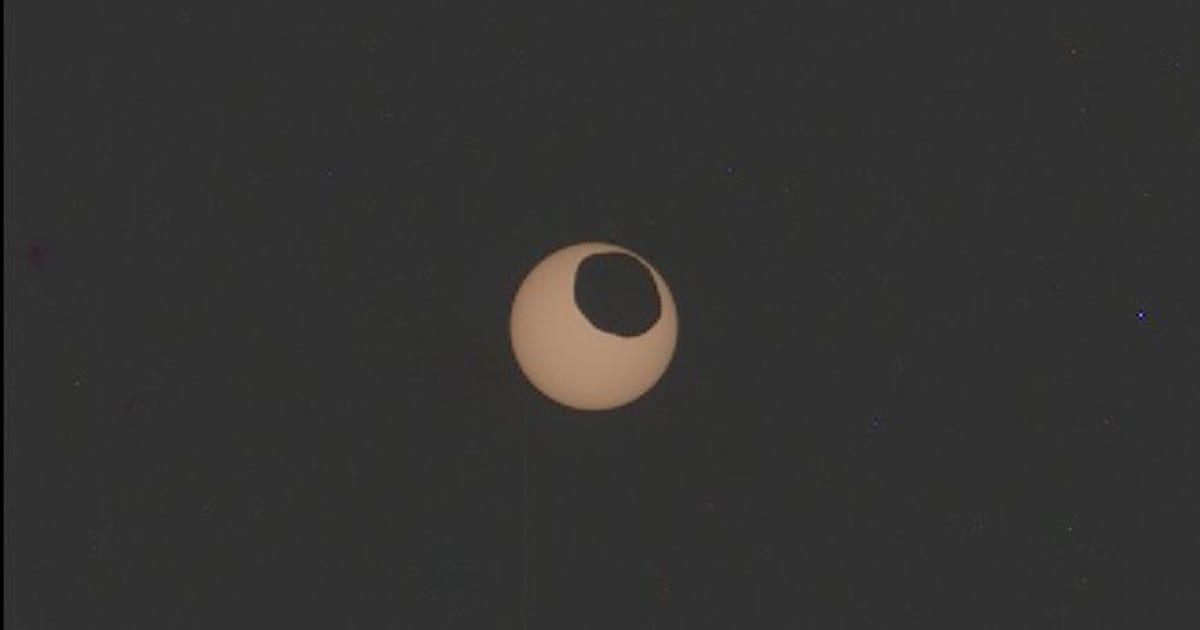
This story is part of Welcome to Mars, our series exploring the red planet.
Solar eclipses on Earth are very round. Round sun. Round moon. On Mars, it’s different. NASA’s Perseverance rover captured a solar eclipse when the red planet’s potato-shaped moon Phobos cut across the sun, blocking out an uneven part of the solar disk.
Space aficionados spotted the eclipse in raw images captured by the rover on Nov. 18. Planetary scientist Paul Byrne likened the view to a “googly eye.”
Image processor Kevin Gill put the shots together into a short video showing Phobos moving across the sun, giving us humans back on Earth a good sense of what an eclipse would look like from the surface of Mars.
Phobos is one of two moons in residence at Mars. Its surface is marked with craters and grooves and it’s only 17 miles (27 kilometers) across at its widest. The moon orbits fairly close to Mars in a relationship that will likely lead to its destruction from stress one day. But that’s millions of years in the future. In the meantime, we get to enjoy the rover’s-eye view as Phobos passes in front of the sun.
Perseverance is exploring the Jezero Crater, a fascinating region with a history of water. The rover is collecting rock samples, looking for evidence of ancient microbial life and studying the landscape, but it also takes time to look up to document happenings in the Martian sky, like the eclipse.
A robot on another planet watched an eclipse and shared it with us. Go ahead and gaze in wonder.
